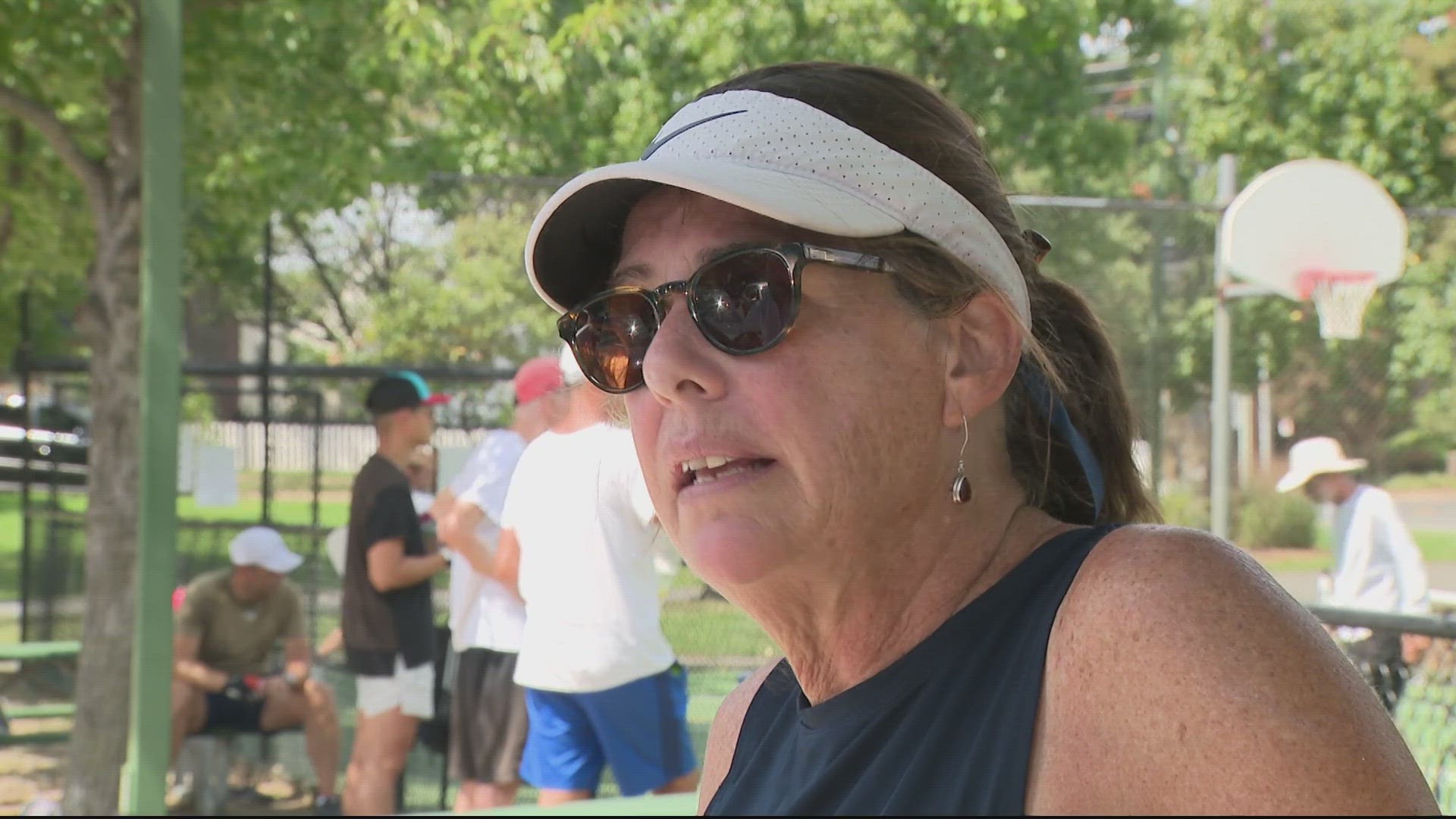ARLINGTON, Va. — The final draft proposal for a controversial pickleball project in Arlington County has been released and officials are asking for feedback from the community.
In an 18-page slide presentation, the project is broken down into a project overview, sound study data and what the next steps are for the Walter Reed Outdoor Pickleball Project.
Pickleball is a relatively new sport, having been invented in 1965. It involves a badminton-sized court and a slightly modified tennis net. Players then use a paddle and a plastic ball with holes to play. The game skyrocketed in popularity in recent years.
The Walter Reed Community Center's courts have become a heated topic of discussion in Arlington. Some residents are angry over noise complaints and others are pushing against the plan to repurpose the tennis courts into pickleball courts because they say the sport is just a fad.
The Walter Reed project is expected to include nine dedicated pickleball courts, sound reduction measures, seating and shade. The county also wants to create pathways, make access improvements that are compliant with the American's with Disabilities Act (ADA) and restripe the basketball court.
According to an estimated timeline, officials are currently holding a third online engagement opportunity to head feedback from the community. If the timeline holds, construction will be finished in 2025.
As part of the online engagement opportunity, officials shared a presentation allowing the community to explore the project layout, design features and enjoy a video presentation before submitting feedback.
Feedback may be given through Dec. 8.
In previous feedback sessions, the county was heard from more than 1,500 people who shared input on two draft concepts both online and in person.
In the November presentation, officials say participants were in favor of the concept that moved courts further from 16th Street. However, many of the comments for both concepts included "move the project elsewhere" and "don't like the project."
Those who commented on the design as a whole said they wanted more parking, landscaping, shade, seating, a permanent restroom, and higher acoustic fencing.
Sound readings from before and after the acoustical fence was added around the courts in late August, showed a reduction in court noise. The study compared continuous (play) sound and impulsive (pop) sound before and after the fencing was added. Officials found the sound was reduced between 6.5 to 13.4 dB.
The final draft of the project was designed using the concept most participants preferred and community feedback on additional elements, including:
Improved Recreational Amenities such as new signage and paddle racks, expanded buffer zones, more shaded seating, and north-south court orientation to avoid direct sunlight in players' eyes.
Improved Park User and Neighbor Experiences such as shifting courts away from 16th Street S, more sound reduction, four additional parking spots, energy-efficient LED court lighting, and better ADA access.
Better Preservation of Natural Resources such as preservation of existing mature trees, more planting of native trees and shrubs, and minimized stormwater run-off.
Now that the final draft has been released to the public, members of the community may submit feedback through a questionnaire which will be available on the project page through Dec. 8.
WATCH NEXT: Pickleball controversy rages on in Arlington
We've told you how the city has been working to resolve the issue. Now - They've put up noise-cancelling barriers.

